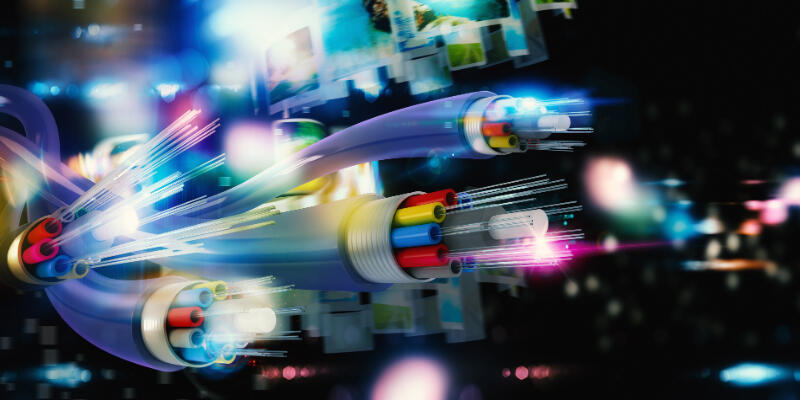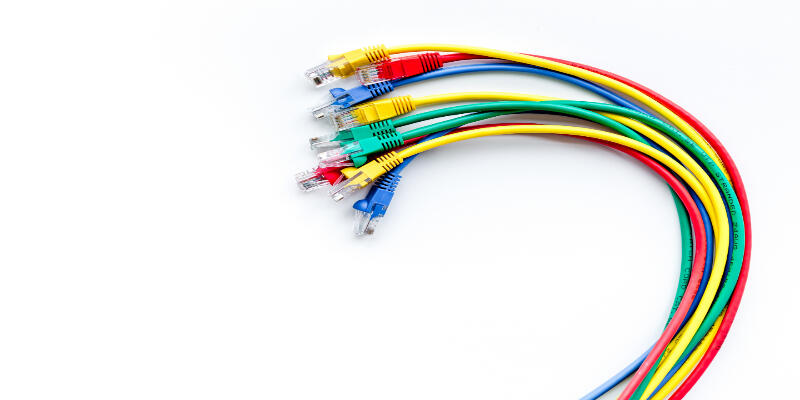Disclaimer: This post may contain affiliate links, meaning we get a small commission if you make a purchase through our links, at no cost to you. For more information, please visit our Disclaimer Page.
People primarily use Ethernet cables to connect electronic devices, such as a computer, to the Internet. Sometimes you come across a problem when one cord is not long enough to reach your device, and you need to use some methods to connect two Ethernet cables to reach it.
There are Ethernet couplers, network switches, and other methods that allow you to connect two Ethernet cables. One of the cheapest ways to connect your cables together are Ethernet couplers. Whichever method you try, consider the length of a cable, so it does not tamper with speed.
Many people want to use the Internet from any room in the house. The recommended length of Ethernet cable is 328 feet. Because of that, users often look at how to join and extend their cables. Luckily, it is possible to do so, and you will only need a couple of items for that. Keep reading to learn more about connecting multiple Ethernet cables and effective methods.
Table of Contents
How Do You Connect Multiple Ethernet Cables?
One way to connect two Ethernet cables is an Ethernet coupler. It is a plastic or metal connector that connects two cables. With this item, you will not waste your time opening a cable and splicing it into a second cable.
The design allows the signal from one cable attached at both ends to move towards the cable on the opposite side. Each open side of your Ethernet coupler has wires that are matching each other. It is the simplest and easiest way to connect your Ethernet cables.
You need to take one of your Ethernet cables and plug one end into one of the female jacks on the coupler. Repeat this process with another length of your cable. The coupler should sit between both lengths. Now you can connect other lengths of each cable in a router, or a PC.
Another good way of joining multiple Ethernet cables is using a network switch to join them indirectly. It is cheap and will do the job well.
You just need to plug cables into the available port on the switch, and it will work. Switches usually have LED lights that show when you connect the device successfully. The switch will require AC power. Think about where to place it in relation to a power outlet.
Connecting Ethernet cables to the network switch is a quick job. Just plug an Ethernet cable into an ongoing port on your modem or router – sometimes referred to as a “WAN” port (on a router, any port will be okay). Then, connect the other end of the Ethernet cable to any port on your switch.
Do the same with another cable. Finally, plug the other end of the Ethernet cable into your device.
You can also join two cables by stripping the wire and twisting inner wires together. To do so, you need to remove and expose the outer jacket that protects twisted copper wires.
Once you have completed this on both lengths on cable and you end up with a good amount of wires to work with, twist wires together from each side so that it looks like a single length. Then wrap it with electrical tape.
This is not a long-term idea. I recommend you do this until you find a permanent solution. The reason is that wires are likely to fail due to corrosion and can disconnect if you move them.
In the next section, you will learn more about Ethernet couplers and how they affect your Internet speed.
Do Ethernet Couplers Slow Down Speed?
Couplers do not have active components and thus cannot slow down the speed. However, you may end up with more defective packets, especially if your cable length is almost 328 ft.
As the number of defective packets increases, throughput decreases because of packet retransmission, but your speed stays the same. If some errors occur, Ethernet adapters will fall off to the next lower speed.
Couplers may slow down speed only if there are too many of them. It also depends on the couplers’ quality. Even a bend in a cable can cause standing waves visible on the screen if you use a time-domain reflectometer.
If the signal-to-noise ratio of the standing waves is high, an Ethernet adapter may auto-negotiate at a lower speed.
The strange thing about Ethernet is that if it does not work well with 1 Gbps, then it will not work with 100 Mbps. This is because the cable bandwidth required for both speeds is the same.
If a link drops to 10 Mbps, it will frequently continue to have a high error rate and drop to 10 Mbps. You will be able to notice these changes immediately.
Another factor you should consider when buying an Ethernet coupler is the prevalence of EMI in the installation environment. If such an environment has air conditioners, generators, or printers, there is a risk of EMI causing crosstalk between circuits.
It may cause a decrease in data transfer speed, increased errors, and poor data quality. Experts suggest users buy high-quality shielded couplers.
If you opt for a shielded Ethernet cable in the EMI area, a shielded coupler will come in handy.
An unshielded coupler can cause a break in the shielded, which exposes you to the potential of EMI. In EMI areas, keeping your entire channel shielded is the best way to design your network. This ensures that your network is safe from any signal noise.
Let’s find out about extending Ethernet cables and which methods are suitable for that.
Can You Extend Ethernet Cables?
The great thing about Ethernet cables is that you can simply connect them to other devices. However, sometimes your cable cannot reach the device you want. Fortunately, it is possible to extend your cable, and there are some ways of doing that.
Before you try anything, check whether you can replace your cable. If you plan to cut down bulk-length rolls and replace the run you are currently using, try to rerun your cable.
When trying to get the best possible Ethernet signal, rule out the need for additional connectors.
If you can rerun your cable, give it a try. If it does not work, then you should try attaching an RJ45 inline coupler.
As already mentioned, the coupler is a device that is cheap and easy to use. You only need to take your cable and plug it into the port of the coupler. Then you take another Ethernet cable and connect its plug to another side.
The fiber-optic cable provides the best performance for long-range network extension. Many telephone and cable companies use it.
For Ethernet 10/100/1000 links, a multi-mode fiber cable has a range of 1804 feet. Single-mode fiber can extend Ethernet cable over distances of over 98425.2 feet. Fiber is also immune to electromagnetic interference, spikes, and ground loops.
You can also replace wireless Ethernet extensions with cellular routers. You can set up a network anywhere you can get cellular phone reception.
Cellular routers provide primary network connection in environments where running a wired network, such as cable, is expensive and not practical.
Do not worry about speed if you decide to extend your Ethernet cable. It should not affect the speed of your connection.
Conclusion
If you want to connect Ethernet cables and extend them, do not worry about the outcome. I hope these solutions will make it way easier.
Whichever method you choose, it will turn out a success. Ethernet couplers are available in various types for different areas.
A network switch is also an excellent choice. Any of the solutions will help you connect network cables and extend them so you can enjoy the Internet from any room.


